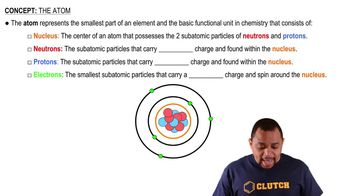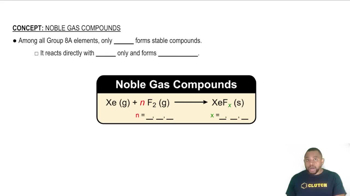Here are the essential concepts you must grasp in order to answer the question correctly.
Atomic Number
The atomic number is the number of protons in the nucleus of an atom, which determines the element's identity and its position in the periodic table. Moseley's work established that elements should be arranged by atomic number rather than atomic mass, leading to a more accurate representation of elemental properties and periodic trends.
Recommended video:
Periodic Table Trends
The periodic table is organized in such a way that elements exhibit trends in properties such as electronegativity, ionization energy, and atomic radius. Understanding these trends helps predict how elements will behave chemically and physically, particularly when comparing elements in the same group, like the noble gases in group 8A.
Recommended video:
Group 8A (Noble Gases)
Group 8A, also known as the noble gases, includes elements like helium, neon, argon, krypton, xenon, and radon. These elements are characterized by their full valence electron shells, making them largely inert and unreactive compared to other elements. Understanding their unique properties, such as low reactivity and high stability, is essential when comparing them to other elements.
Recommended video:




